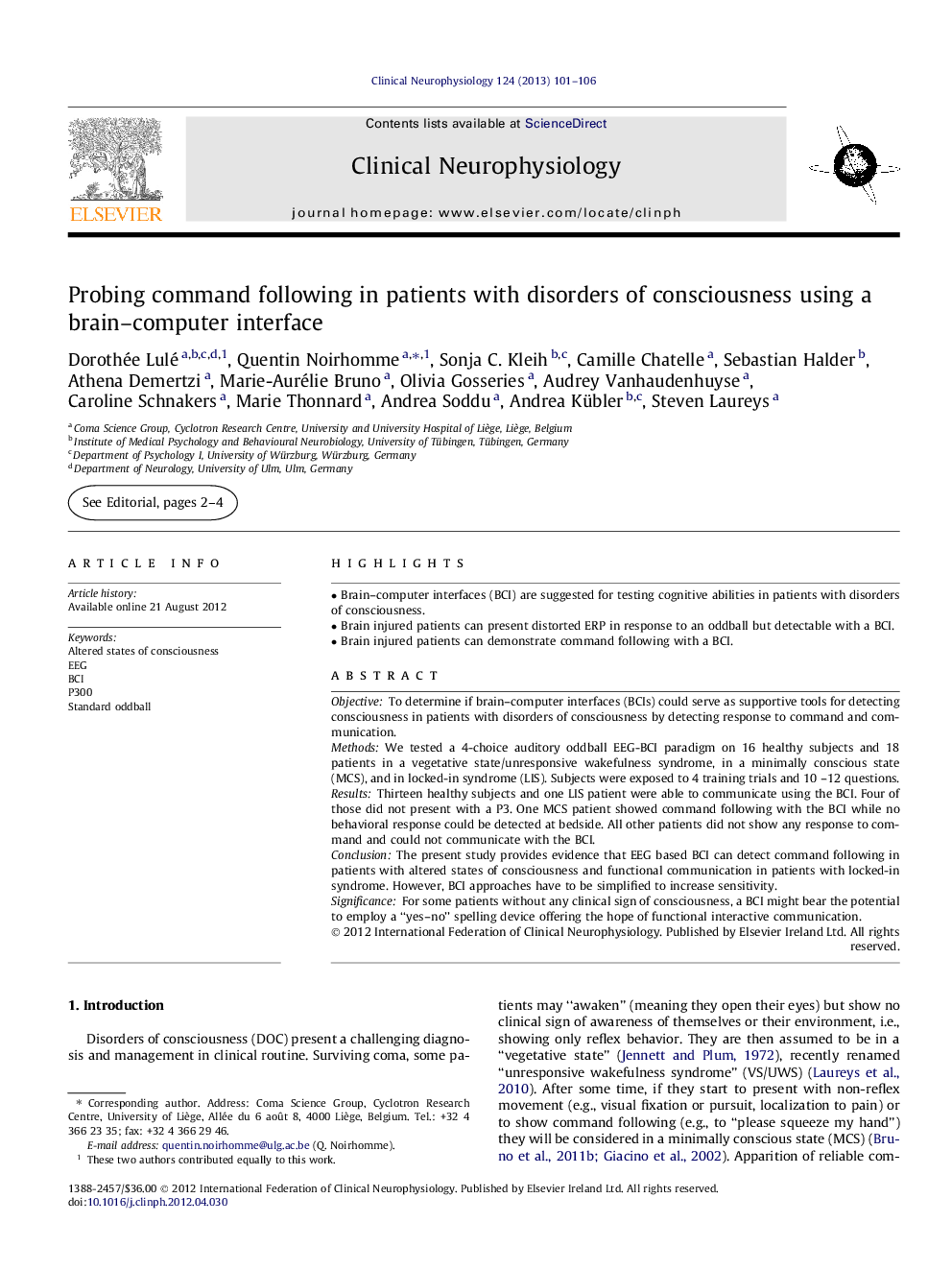| Article ID | Journal | Published Year | Pages | File Type |
|---|---|---|---|---|
| 3043038 | Clinical Neurophysiology | 2013 | 6 Pages |
ObjectiveTo determine if brain–computer interfaces (BCIs) could serve as supportive tools for detecting consciousness in patients with disorders of consciousness by detecting response to command and communication.MethodsWe tested a 4-choice auditory oddball EEG-BCI paradigm on 16 healthy subjects and 18 patients in a vegetative state/unresponsive wakefulness syndrome, in a minimally conscious state (MCS), and in locked-in syndrome (LIS). Subjects were exposed to 4 training trials and 10 –12 questions.ResultsThirteen healthy subjects and one LIS patient were able to communicate using the BCI. Four of those did not present with a P3. One MCS patient showed command following with the BCI while no behavioral response could be detected at bedside. All other patients did not show any response to command and could not communicate with the BCI.ConclusionThe present study provides evidence that EEG based BCI can detect command following in patients with altered states of consciousness and functional communication in patients with locked-in syndrome. However, BCI approaches have to be simplified to increase sensitivity.SignificanceFor some patients without any clinical sign of consciousness, a BCI might bear the potential to employ a “yes–no” spelling device offering the hope of functional interactive communication.
► Brain–computer interfaces (BCI) are suggested for testing cognitive abilities in patients with disorders of consciousness. ► Brain injured patients can present distorted ERP in response to an oddball but detectable with a BCI. ► Brain injured patients can demonstrate command following with a BCI.
